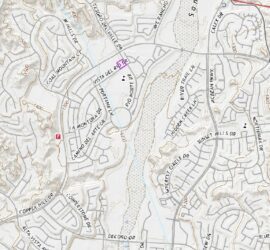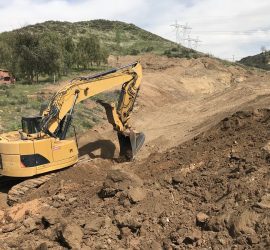Environmental
Due Diligence
The purpose of environmental due diligence is to evaluate the environmental liability and risk of a property, prior to acquiring it. This is a necessary process today, due to the complications of modern environmental laws for properties, and their prior records of environmental compliance violation. Because new landowners can be held liable for the environmental liabilities of a property with contamination, best practices encourage a proper evaluation before the closing of escrow. Updated September 10, 2022.
Legal Ramifications of Doing a “Cowboy Deal”
Taking on the title of a property today, without any environmental due diligence is colloquially referred to as a “Cowboy Deal.” This can be risky on any type of property. But especially so with commercial or industrial lots. In fact, there are many unforeseeable liabilities that come with industrial and commercial properties today. And many of them can overwhelm developers and investors, to the point of canceling the project entirely. The legal process alone can be damaging the timeframe and budget of a project, let alone the mandatory agency compliance process for environmental assessment and remediation.
Possible Obligation to Report the Results
In some cases, the findings of any environmental site assessment report may comprise an apparent health risk to the public. Typically, environmental due diligence reports are proprietary and are the property of the report users and their attorneys or advisors. However, modern environmental laws indicate the absolute requirement to report results to government authorities if any risk to humans, or the general public is apparent. The requirements for reporting the results of a due diligence investigation are strategically, not complex. Nonetheless, a consultation with any environmental regulatory agency or environmental consultant may provide more guidance.
Various Options with Environmental Due Diligence
There are a few options to conduct environmental due diligence. Limited reports are less comprehensive, and provide environmental information about properties assumed to have lower liability risks. The more comprehensive options are site assessments for properties assumed to have higher liability risks, and also provide buyers with CERCLA liability protection as Innocent Land Owners (ILO). Each environmental due diligence option gears to encompass different levels of liability risk. Please see the options below, listed in order from “low-risk to “high-risk.”
Environmental Questionnaire
To start, many financial institutions require the completion and review of an environmental questionnaire. The information on this form is what many risk assessors use to determine whether a Phase 1 ESA needs to be done. In fact, this questionnaire doesn’t require an environmental professional to perform. However, any environmental due diligence in furtherance of this step does typically require professional geologists and engineers.
Environmental Compliance Audit
Many organizations independently perform periodic environmental compliance audits, to establish a record of good housekeeping a low contamination risk. In fact, compliance audits can also be mandatory, per the order of regulatory oversight agencies. For instance, a business might have complaints about pollution. And as a result, it receives an environmental compliance violation from the local Hazmat Division of the Fire Department. After performing any corrective action, the agency requires an environmental compliance audit and certificate of compliance for closure.
Environmental Desktop Report
Environmental Desktop Reports are a form of limited environmental site assessment reports for properties that presumably have lower contamination risks. For example, a buyer may order a desktop environmental report for a lot that currently comprises a restaurant and is adjacent to a gasoline station. The purpose of the report is to determine whether the adjacent fuel station contamination plume is migrating into the restaurant property. And if so, potentially perform a subsurface investigation for remedial action planning.
Transaction Screen Assessment
Similar to a desktop report, a Transaction Screen Assessment is an environmental due diligence process that aims towards risk guidance for the Small Business Administration (SBA). In fact, the SBA Transaction Screen typically incorporates some of the major components of an ASTM-compliant Phase 1 ESA. For instance, hazardous materials generation records and historical fire insurance maps. If the SBA risk assessors determine comprehensive site assessments are necessary, the components of a Transaction Screen Assessment may be transferable to ESA reports for savings down the line.
Limited Subsurface Testing
Environmental Due Diligence also includes the actual sampling of subsurface materials too. Sometimes, a commercial property owner may benefit from independently conducting a preliminary subsurface investigation, prior to a full-scope Phase II ESA. For instance, a shallow or sub-slab soil gas screening. By taking smaller steps in the form of limited sampling, landowners can use the results to figure out whether an ASTM-compliant Phase II Subsurface Investigation is even necessary.
Phase I Environmental Site Assessment
The Phase I Environmental Site Assessment process is a comprehensive environmental due diligence action that follows official ASTM guidelines and standards. This is the official site assessment process that qualifying users for innocent liability protection, under conformance with CERCLA and AAI rules. Phase 1 ESA report costs can range from $1,800 to about $6,000. Ultimately, the prices depend on the size of the property, land-use, and difficulty to perform the inspection and file review. Moreover, a Phase 1 Environmental report expires once the AAI time frame lapses.
Phase II Environmental Site Assessment
Recommendations for a Phase 2 Subsurface Investigation come from the Phase 1 ESA process. Phase II Environmental Site Assessments are comprehensive field investigations for properties with recognizable environmental conditions (RECs). Alternatively, historical recognizable environmental conditions (HRECs) or controllable recognizable environmental conditions (CRECs) may also lead to a Phase 2 ESA. Phase 2 Environmental Site Assessments compare the detections of chemicals on-site, against environmental screening levels for conclusions and recommendations. And sometimes, the scopes are enhanced to comprise a geophysical survey of underground conditions, using ground-penetrating radar.



